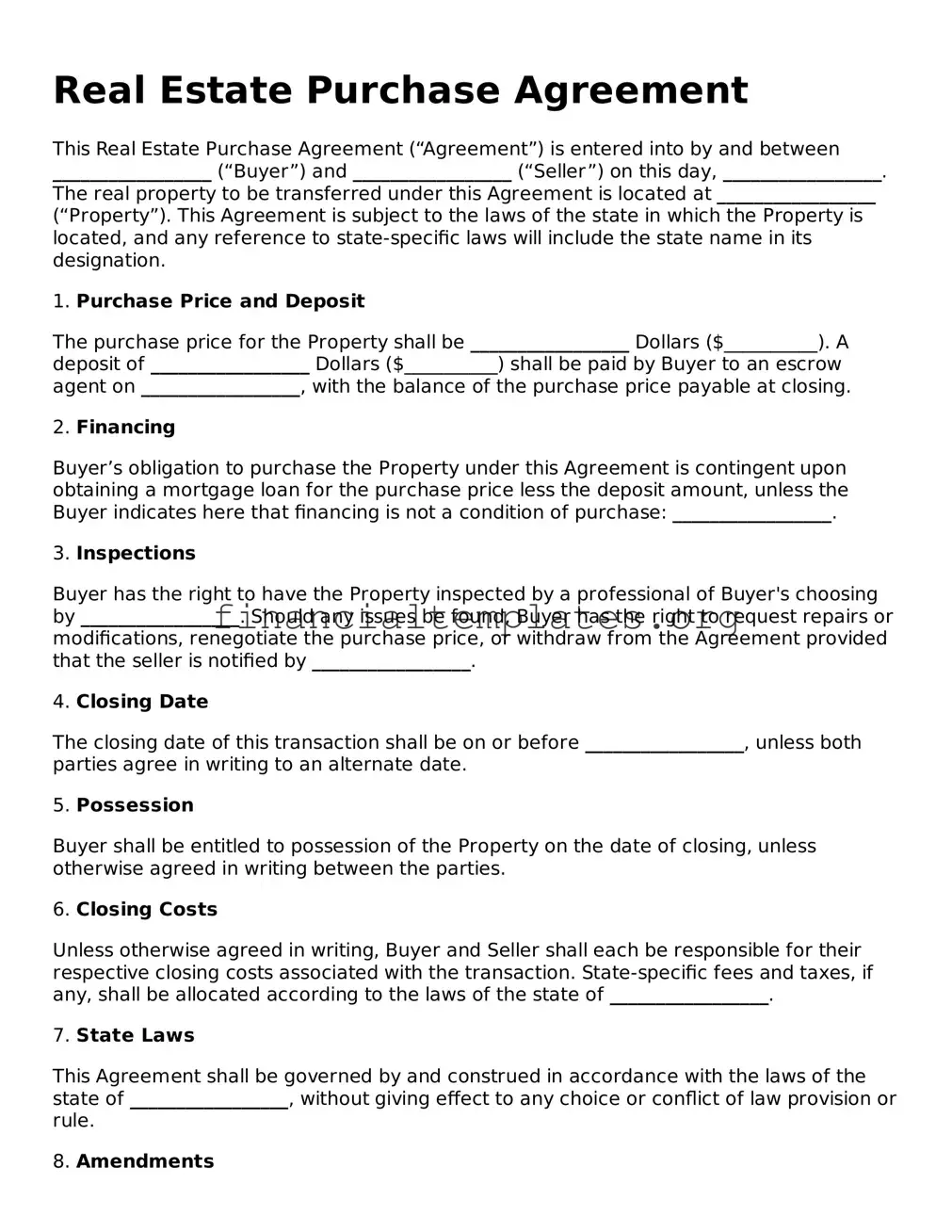Real Estate Purchase Agreement
This Real Estate Purchase Agreement (“Agreement”) is entered into by and between _________________ (“Buyer”) and _________________ (“Seller”) on this day, _________________. The real property to be transferred under this Agreement is located at _________________ (“Property”). This Agreement is subject to the laws of the state in which the Property is located, and any reference to state-specific laws will include the state name in its designation.
1. Purchase Price and Deposit
The purchase price for the Property shall be _________________ Dollars ($__________). A deposit of _________________ Dollars ($__________) shall be paid by Buyer to an escrow agent on _________________, with the balance of the purchase price payable at closing.
2. Financing
Buyer’s obligation to purchase the Property under this Agreement is contingent upon obtaining a mortgage loan for the purchase price less the deposit amount, unless the Buyer indicates here that financing is not a condition of purchase: _________________.
3. Inspections
Buyer has the right to have the Property inspected by a professional of Buyer's choosing by _________________. Should any issues be found, Buyer has the right to request repairs or modifications, renegotiate the purchase price, or withdraw from the Agreement provided that the seller is notified by _________________.
4. Closing Date
The closing date of this transaction shall be on or before _________________, unless both parties agree in writing to an alternate date.
5. Possession
Buyer shall be entitled to possession of the Property on the date of closing, unless otherwise agreed in writing between the parties.
6. Closing Costs
Unless otherwise agreed in writing, Buyer and Seller shall each be responsible for their respective closing costs associated with the transaction. State-specific fees and taxes, if any, shall be allocated according to the laws of the state of _________________.
7. State Laws
This Agreement shall be governed by and construed in accordance with the laws of the state of _________________, without giving effect to any choice or conflict of law provision or rule.
8. Amendments
Any amendments or modifications to this Agreement must be made in writing and signed by both Buyer and Seller.
9. Acceptance
The undersigned Buyer and Seller acknowledge they have fully read, understood, and accepted all terms and conditions of this Real Estate Purchase Agreement.
Buyer’s Signature: _____________________ Date: _____________________
Seller’s Signature: _____________________ Date: _____________________
